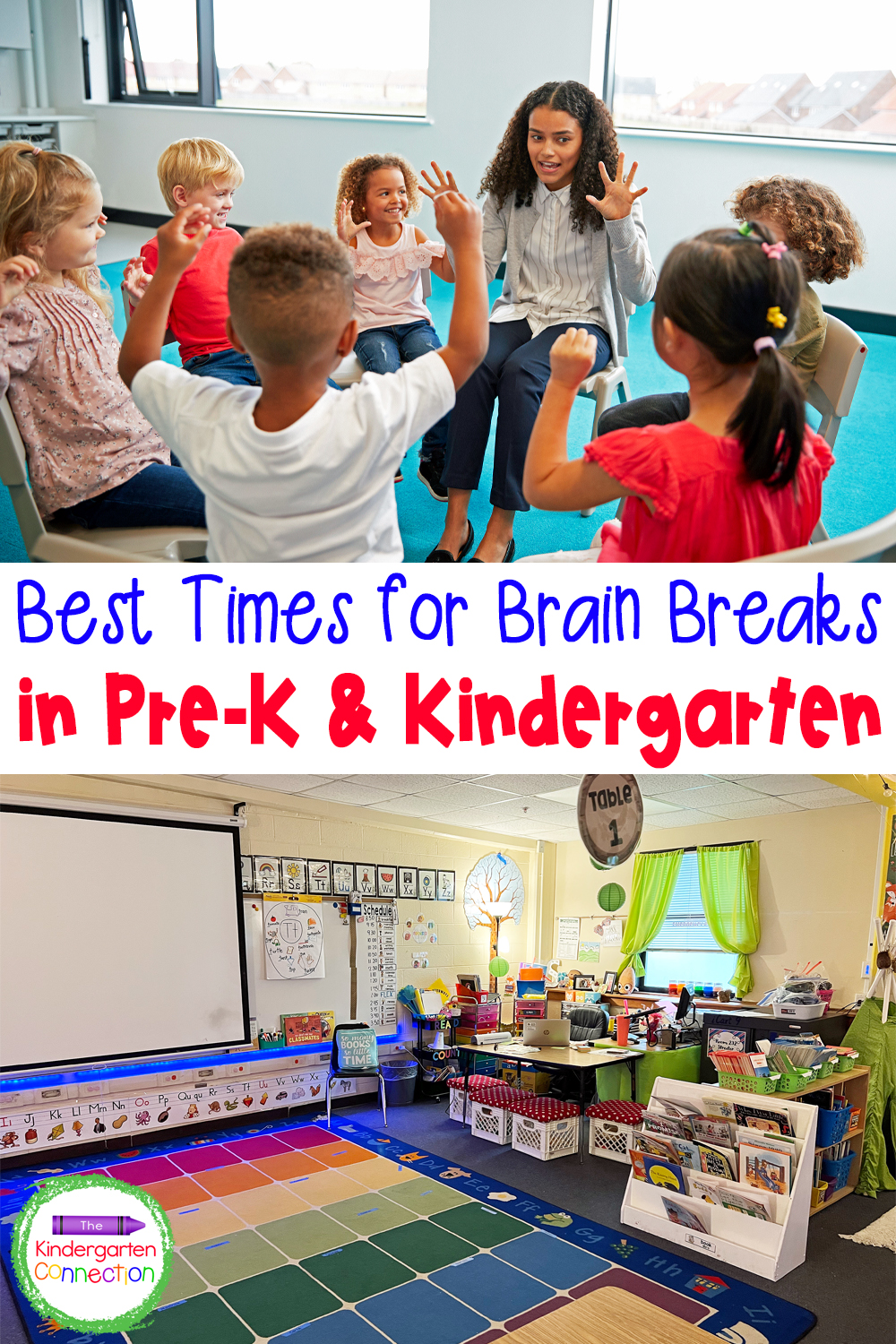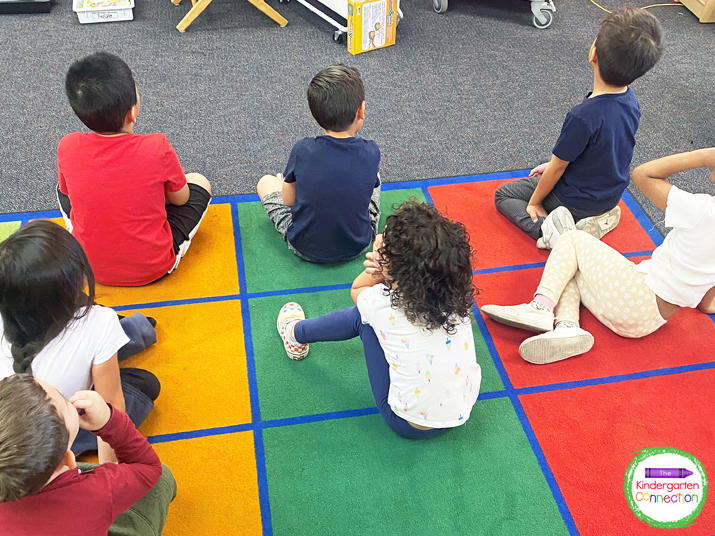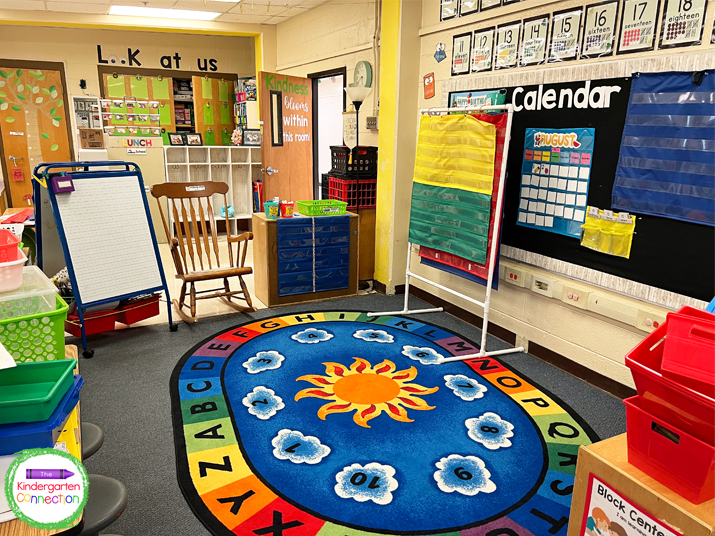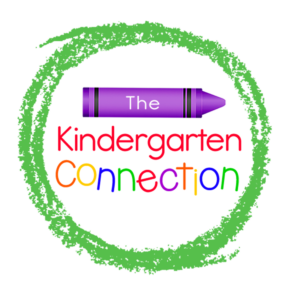As early childhood teachers, we may hear a lot about brain breaks but do we know why they are important for our students (and us)? Brain breaks provide a way to reset our body and our brains after we have been sitting for a while or doing something that has had us focused. They are also a tool that can help students know when a transition is coming. Keep reading to find out some of the best times to use classroom brain breaks in Pre-K & Kindergarten!
*For even more helpful strategies and tips, be sure to check out our mini-course –
How to SUPERCHARGE your Circle Time!

For teachers, brain breaks can be a helpful tool in our teacher toolboxes, BUT you may be wondering, “When are the best times to use them?” Below are my favorite times to use brain breaks and why they make a difference!
And before you go, be sure to click HERE for a list of fun and easy brain breaks!
The first time I like to use brain breaks is BEFORE Circle Time begins. I use them as a way to help the students transition into this important learning time. This “reset” helps kids prepare to focus and when we do this routinely, they are ready and know that when we’re done it’s time for them to sit, listen, and learn.

The second time is in the MIDDLE of Circle Time. If we need just a bit more time but I notice that student attention is fading, I will throw in a brain break to help them get their wiggles out, move their bodies, and reset themselves before we continue on. I use this one only as needed. You may find yourself relying on this more at the beginning of the year as you are helping students build their stamina to sit.
The third time is AFTER Circle Time ends. This is a great way for students to reset their minds and bodies and be prepared for the transition that follows Circle Time. Once again, if you do this routinely, the students know that this brain break is their signal for a transition.

Brain Breaks are an effective tool to use with your students and they can be a fun way to help them reset their attention to what you want them to focus on!
When you sign up, you will get tools, resources, and some printables to get you on your way to Circle Time magic! The best part? This mini-course is perfect to take any time of the year!
These strategies and resources are easy to implement and can make a difference in your Circle Time right away. During this mini-course you will:
No need to wait until next school year, request your invite today so you can “Supercharge Your Circle Time!”
